For the discerning comic book fan, Alan Moore’s seminal classic Watchmen is still the gold standard of the medium – despite having been written more than thirty years ago. A literate, multi-layered complete work (rather than an ongoing series), Watchmen was at once a great superhero comic and an intelligent deconstruction of the concept. These were superheroes who were real, recognisable human beings, with all the flaws and frailties that real people have. Alcoholics, racists, sadists, misogynists – Moore’s characters were these and more, but always rounded, with good qualities to offset the bad ones. You know, like actual people.
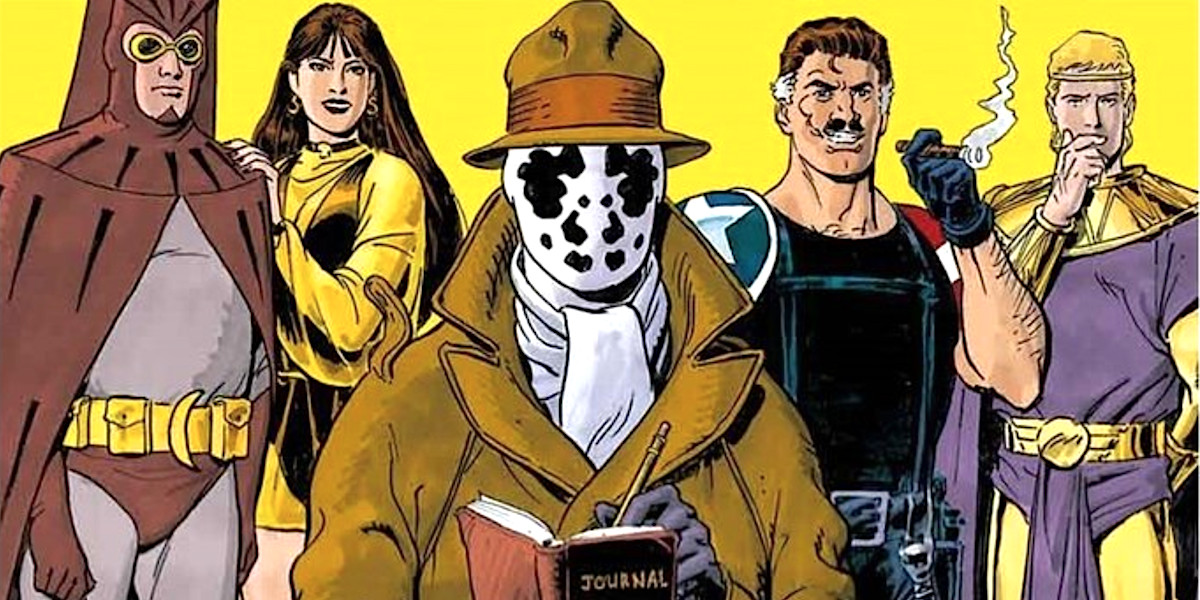
For the comics industry, the impact of its 1985 publication was seismic. Suddenly, it was no longer enough to have a purer-than-pure hero and a blackhearted, irredeemable villain. Nuance had arrived in the world of comics, and the old favourites scrambled to get on the bandwagon. Probably the most notable was Batman – always a rather dark concept, and Frank Miller’s Dark Knight Returns brought all that nuance to the Caped Crusader, ushering in an era of “dark” comic books that led to Tim Burton’s neo-gothic Batman films.
Which sort of missed the point. Moore’s work wasn’t just about injecting darkness into the previously bright, four colour world of comics. Rather, Watchmen did far more, showing that the medium was capable of complex, multi-layered storytelling every bit the equal of classic literature. When the book, a “mere” comic, featured on Lenny Henry’s choices for Desert Island Discs on Radio 4, its status as a literary classic was assured.

Unlike more straightforward comic books, publisher DC has never seemed too sure how to capitalise on the success of Watchmen. It took 24 years for a movie adaptation to see the light of day, and Zack Snyder’s 2009 epic has many problems. Not least the failure to recognise that Moore was exploiting the possibilities of comic books as a medium, something that doesn’t easily translate to another medium. Films are not comics, and Snyder’s slavish faithfulness to his source material is the film’s greatest weakness. Still structured like a 12 issue comic, the 2009 Watchmen doesn’t feel properly like a film, but it’s not a comic either. It has an identity crisis.

It had a modest success though, and the eager profit-hounds at DC started casting about for more ways to wring further mileage from their still-hot property. First up was a fairly pointless series of prequel comics based on the iconic characters, entitled Before Watchmen, in case we somehow got confused at the resurrection of those killed in the original.

Before Watchmen is well enough done, with some well-written tales and good art, but it was pointless for all of that. Moore had already given us all this backstory, via brief flashbacks or veiled allusions, in the original work. Fleshing it out felt like an exercise in redundancy.

As of 2019, DC are nearly done with publishing a 12 issue actual sequel, entitled Doomsday Clock, which is far more interesting. It follows logically on from the endpoint of the story, but tries to escape the limiting nature of what’s clearly an ending by shifting the (surviving) Watchmen characters into the mainstream DC Universe, so they can grapple with the likes of Superman, Batman and the Joker. It’s an interesting idea, and well done – but for me the real strength of Watchmen was that it stood apart from any existing part of a multiverse. Chucking it into a world of character crossovers is fun, but opens the floodgates to the worrying idea that these will be repeated ad nauseam, to the point that the Watchmen characters, and universe, are cheapened and diluted to become just like any other comic book heroes.
Watchmen – the series

All of which brings me, in a very roundabout way, to HBO’s new Watchmen series. In some ways, it’s actually a less ambitious concept than Doomsday Clock – a straightforward sequel to the comic (and not the movie, which had a significantly different ending). Set in 2019, but a 2019 as it would have been following the events of the comic’s alternate 1985, it tries to recapture that nuance and subtlety, but unlike Zack Snyder’s film, it does it by recognising that it’s working in (and exploiting) a different medium – long form television, with all the opportunities for depth and nuance that the form enables.
I must admit, the fact that the creator and showrunner was Damon Lindelof did not fill me with confidence. Lindelof has form at creating a good story but having no idea whatsoever how to end it. You may recall the endings of his previous projects being less than satisfactory; most notably Lost, but it’s also worth mentioning the unfathomable and baffling Prometheus.
Still, this is episode one, so the worry about the ending is one for the future. And I have to say, with a few reservations, it’s done well. Lindelof has not just taken the original as a starting point, he also seems to be neatly capturing its storytelling style, while paying homage to, and developing, concepts barely introduced by Moore.
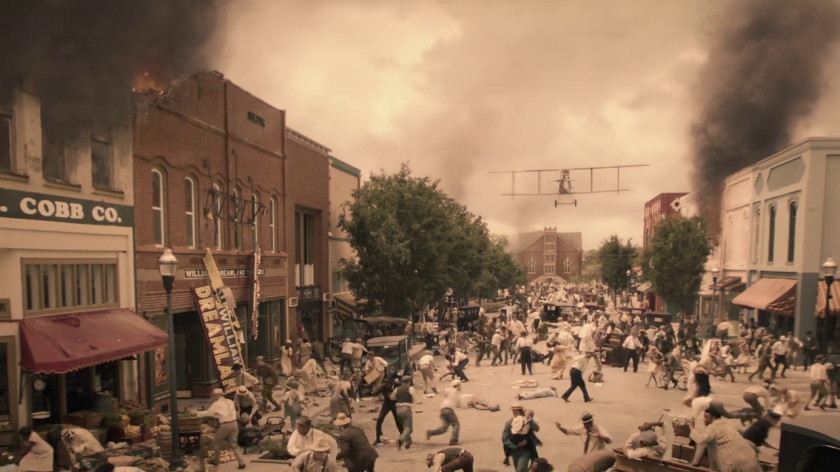
So, like the comic, we’re plunged into this very different present day with barely any exposition (at first) to explain what the devil is going on. The series opens with an explosive depiction of the 1921 Tulsa race riots – with no explanation of what was happening or why. Given that Watchmen can be categorised as an alternate history story, I actually wondered if this was a fiction – certainly I’d never heard of this full on assault on a city’s black population, even to the extent of biplanes swooping down and strafing the town’s main street.
But no, the Tulsa riots really happened, and it’s an indictment of America’s still-extant problems with race that they’re not very well known, or taught about in school. Opening with this shameful, brutal episode sets the scene for what this new iteration of Watchmen will be concerned with – racial politics in a still fractured USA, no more sorted in this fictional universe than our own.

There’s plenty of scope for an angry, gripping story right there, without any real need for connection to the Watchmen universe, and it remains to be seen whether Lindelof will make the elements come together satisfactorily. Prometheus, for instance, would arguably work far better as a film without the laboured attempts to tie it into the Alien franchise.
This is probably why, for this opening episode at least, direct references to the original are sparse and, when they do appear, almost throwaway. We see brief, grainy footage on a TV news report of Dr Manhattan on Mars, while an apparently routine rain of tiny squids calls back to the original’s ending of a (manufactured) giant alien cephalopod devastating New York City.
Aside from this brief glimpse of an original character, everyone else onscreen seems to be new. Well, with the possible exception of the mysterious, rich old codger in an isolated mansion, who seems to be entirely separate from the story proper. Played with his customary scenery-chewing by our very own Jeremy Irons, this mysterious plutocrat lives in a strange bubble of reality in his giant stately home, attended only by two strangely obsequious servants who serenade him with ‘For He’s a Jolly Good Fellow’ and present him with celebratory cakes, while seeming to have problems distinguishing between a knife and a horseshoe.

Here, HBO’s publicity has done the show something of a disservice. This character is clearly meant to be an enigma, his identity presumably to be revealed in a surprise twist later in the show. Unfortunately, thanks to press releases, we already know that Irons is actually playing Adrian Veidt, the “villain” of the original story, which rather undercuts a potential source of tension.
Back in Tulsa, we’re introduced to what appears to be the main plot, as a routine stop and search by a police officer reveals a world subtly different to our own. It’s a tense scene which subverts the usual such incidents; the scared driver is a gum-chewing white cracker, while the seemingly over-suspicious cop is black – and he wears a mask.

As the ep progresses, it becomes clear that all cops in this world now wear masks – the rank and file in the distinctive bright yellow associated with Watchmen, the detectives in a variety of their own choosing. The most unsettling of these is a reflective silver cloth covering that calls to mind a fetish mask, worn by a detective known only as ‘LG’, which, it turns out, stands for ‘Looking Glass’. So not only do the cops wear masks, they use secret identities. Just like masked vigilantes.

This is a clever twist. In a world where masked vigilantes were outlawed by the government in 1977, the police force now use all the same methods? How could this be? Well, there’s no answer, at least not yet. In keeping with the original comic, Lindelof’s screenplay doesn’t give so much as a millimetre of exposition. The comic plunges us into a world that’s recognisable but noticeably different, and the reasons why are gradually unfolded as the narrative progresses.
So it seems Lindelof is faithfully adapting the comic’s narrative style while paying tribute to its content. Again like the comic, numerous easter eggs are scattered throughout, visually or in dialogue, that reference the original or give clues to the new plot – I’ll be detailing some of them below. The net effect, though, for this first episode, is absolute impenetrability. Things are happening, and we watch them excitedly with no idea why they’re happening. While it’s a gimmick that reflects respect for its audience, I can see that some people might find the total lack of exposition, in a pilot episode, off-putting. Still, while I have my reservations about Damon Lindelof, I have to admire his conviction in doing this.
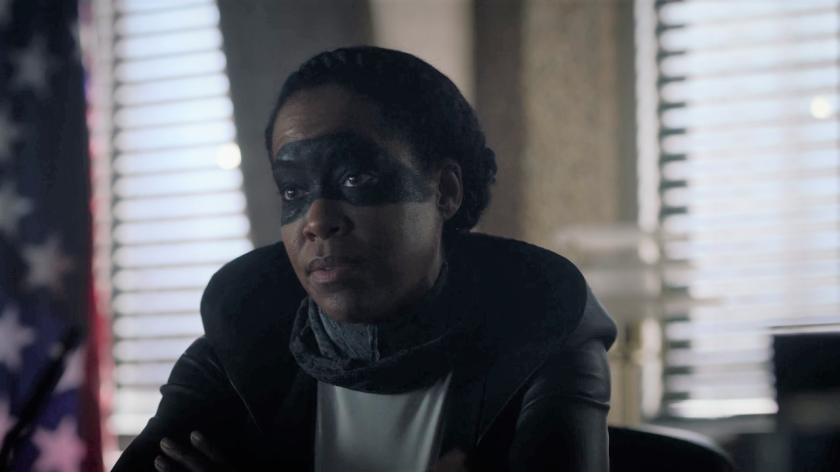
Our main character, it becomes clear, is one of the legally sanctioned cops/vigilantes, a detective called Angela Abar who masks up in black, balancing her home life and family with her secret life as a cop. In fact, her introductory scene makes it clear that she (and presumably the rest) don’t even admit to being cops. She claims, at a school career day, that she retired years ago, after a bloody incident known only as “the White Night”. Here again is a clue, which will hopefully be enlarged upon later.
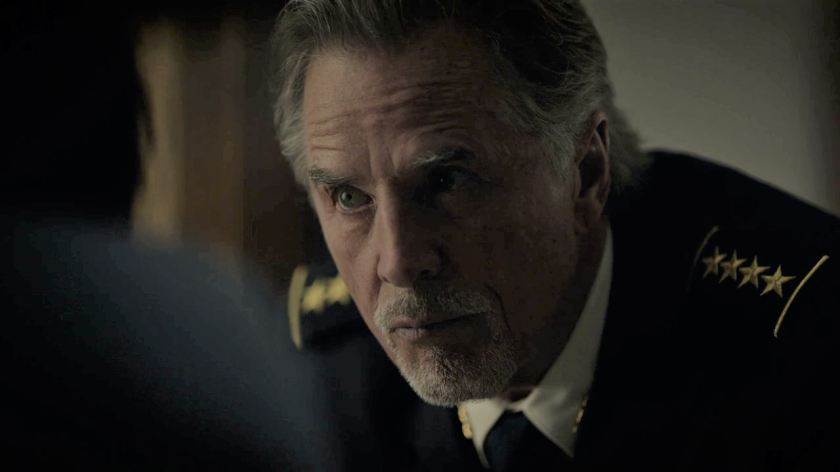
Regina King is a likeable but powerful presence as Angela, ably backed up by old hand Don Johnson as the Tulsa police chief Jud Crawford. I like Johnson, who’s a charismatic presence even in his later years, but his presence does telegraph the plot somewhat. In recent years, his screen appearances have tended to be little more than extended cameos, as his character is usually dead by the end of the opening episode. So it proves here, as, responding to a mysterious phone call, Angela drives to the Oklahoma countryside to find Jud hanging from a tree, in a clear reference to the lynchings that were such a horrific element of the earlier Jim Crow era. As the comic opened with the death of the Comedian, which proved to be the key to the whole plot, here the story is driven by a death again. It remains to be seen what will spring from it.
Episode Title reference
In the original comic, each issue had a title quoting a snippet of a song (or poem) whichwould turn out to be deeply significant. It looks like Lindelof wants to follow this style as well.

This ep is entitled It’s Summer and We’re Running Out of Ice – a quote from Rodgers and Hammerstein’s Oklahoma, which we see being performed by an all black cast early in the ep. The significance? The song is called, ‘Poor Jud is Dead’, referring to the bad guy of the musical. It’s playing on the soundtrack as the camera pans down to the gently swinging feet of this dead Jud.
Easter eggs and references
As with the comic, references and clues are neatly scattered throughout, in a ‘blink-and-you’ll-miss-em’ style from director Nicole Kassell. Here are a few of them…
Reappearing characters: original 1940s vigilante, and founder of the Minutemen in the original comic. The silent film being watched in the Tulsa cinema during the riot shows a figure dressed just like him – but it’s misdirection, as this turns out to be ‘Bass Reeves’, a (fictional) black marshal in the old west.
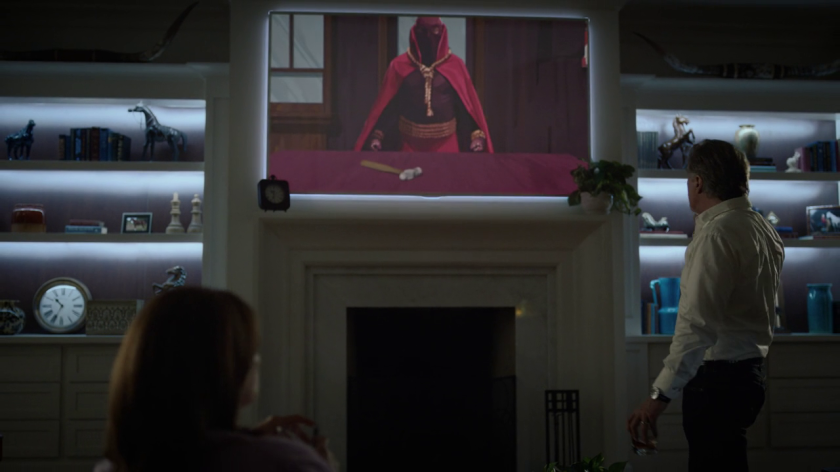
Later, though, we see an actual representation of Hooded Justice, being portrayed (along with other comic characters) in a trailer for the upcoming show within a show, American Hero Story (nice sly dig at Ryan Murphy’s American Horror Story and American Crime Story there). Unless I miss my guess, it looks like Lindelof is going to use this show within a show to counterpoint the main plot, just as Moore did with comic-within-a-comic Tales from the Black Freighter. For added reference points, it’s advertised on an overhead zeppelin, a rather tired trope of alternate timelines but one consistent with the comic.
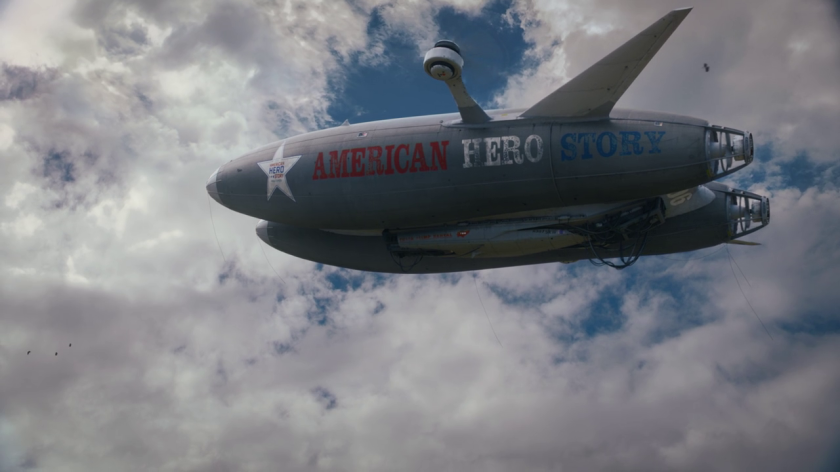
As mentioned earlier, Dr Manhattan puts in a fleeting appearance in some grainy news footage showing him on the surface of Mars.

In-house bank hero Dollar Bill (sadly deceased due to a cape/revolving door incident) is seen briefly on a poster in the house of a Seventh Cavalry white supremacist.
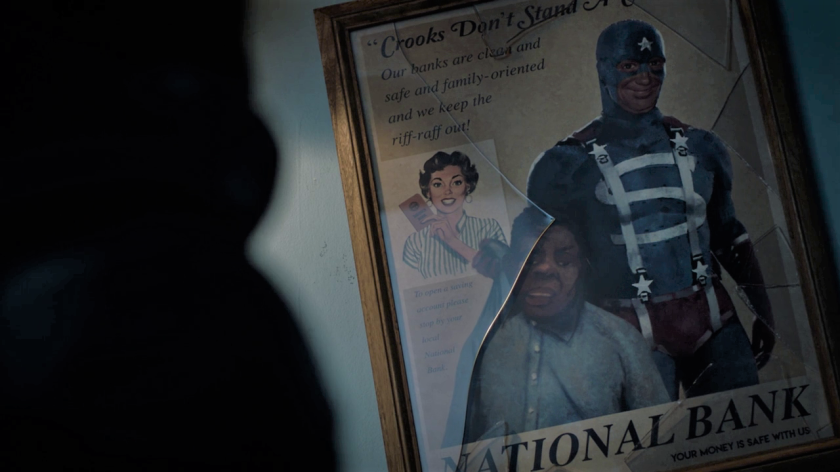
The Seventh Cavalry themselves wear masks identical to that worn by now-disintegrated psycho/hero Rorschach.
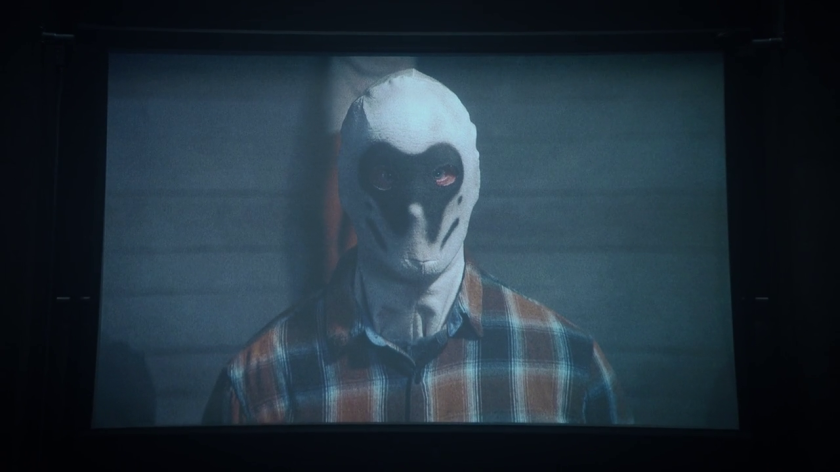
Balancing things out is the fact that the Tulsa police department have an Owlship, exactly like comic character Nite Owl’s, at their disposal.
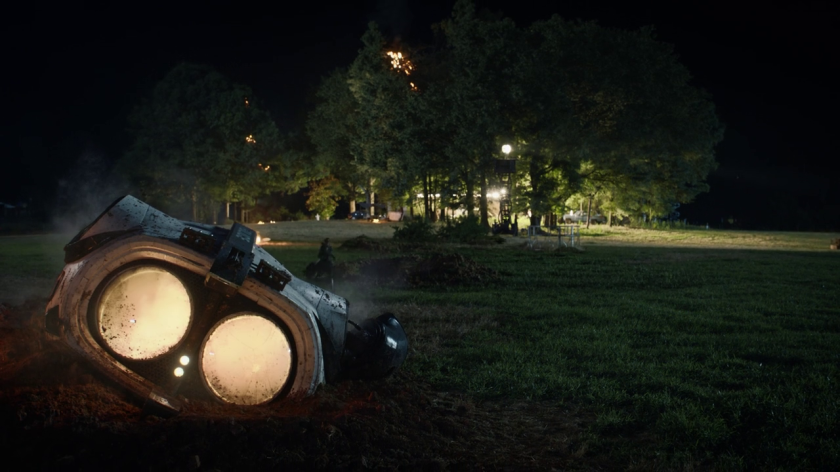
It’s not clear if it’s the original, but it seems likely they’ve been mass produced for police forces – and if they have them, presumably the military too.
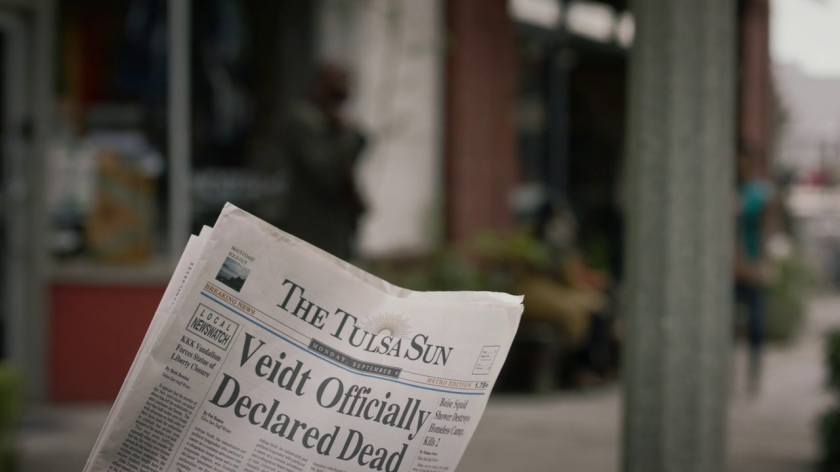
And while HBO has ensured that we know Jeremy Irons is playing Adrian Veidt, his name is only referenced once, on a newspaper headline saying that he’s been declared dead. So presumably he’s been missing for a while, perhaps as a result of his original deception having been revealed to the world. It’s notable that he lives in an enclave which appears to be entirely bereft of modern technology; and also that he’s busy writing a play called ‘The Watchmaker’s Son’, which will presumably be about Jon Osterman / Dr Manhattan.
US Presidents: in a throwaway line right at the end of the comic, it’s hinted that Robert Redford is planning a run as President to challenge incumbent Richard Nixon; at the time of publication, the actual President really was a former Hollywood actor with the initials RR.
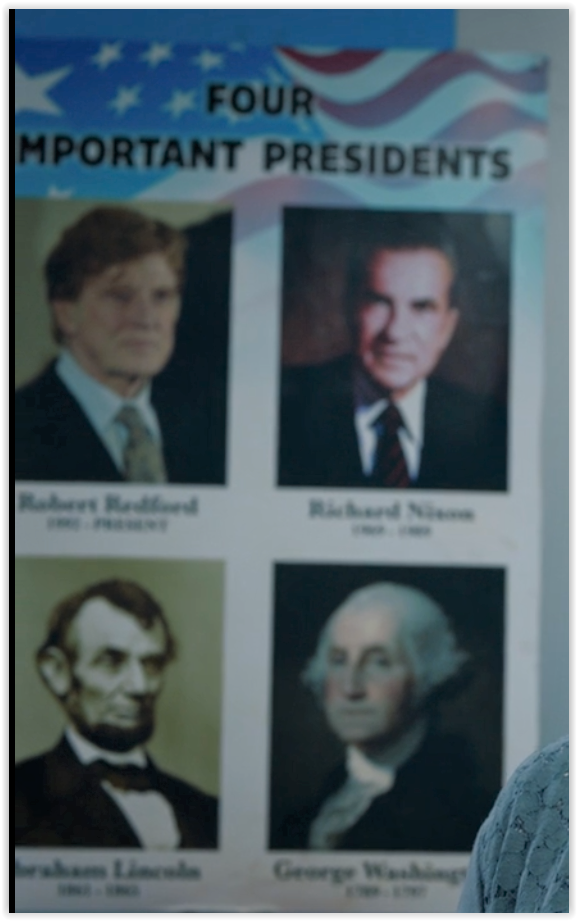
Here, Redford has clearly succeeded – his face is shown on a poster of US Presidents in the school class, and various characters refer disparagingly to “Redfordations”, which we can deduce from the dialogue as being reparations to black citizens whose ancestors suffered in previous generations. Again, this is a hot topic racial issue in real life, as calls for reparations for slavery continue to go unheard.

Redford has been President in this world for more than thirty years – it was established in the comic that Nixon had repealed the two-term limit in the US Constitution. Nixon’s own three terms don’t seem to be remembered well; trailer parks are referred to as “Nixonvilles”, like the “Hoovervilles” of the Great Depression. Still, he seems to have got his mug carved into Mount Rushmore.
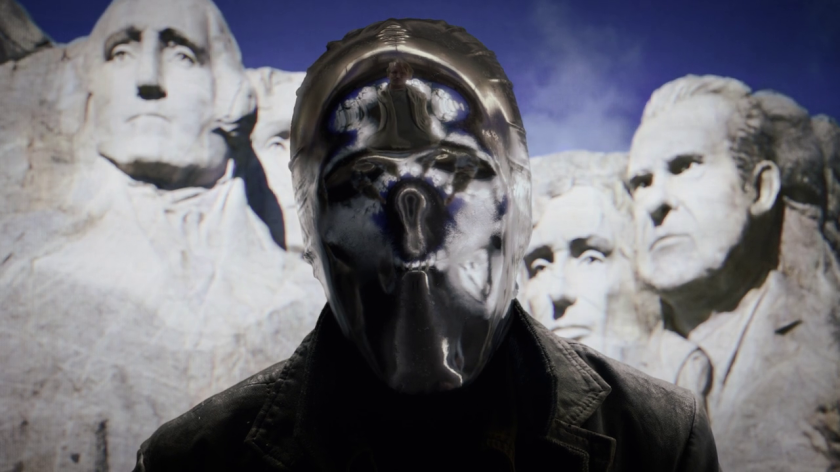
Squids: There’s a lot of prominence given to squids in this ep. A poster in the classroom is labelled ‘Anatomy of a Squid’, while Angela and her daughter are delayed on their trip home by a sudden squall of tiny squids falling from the sky.
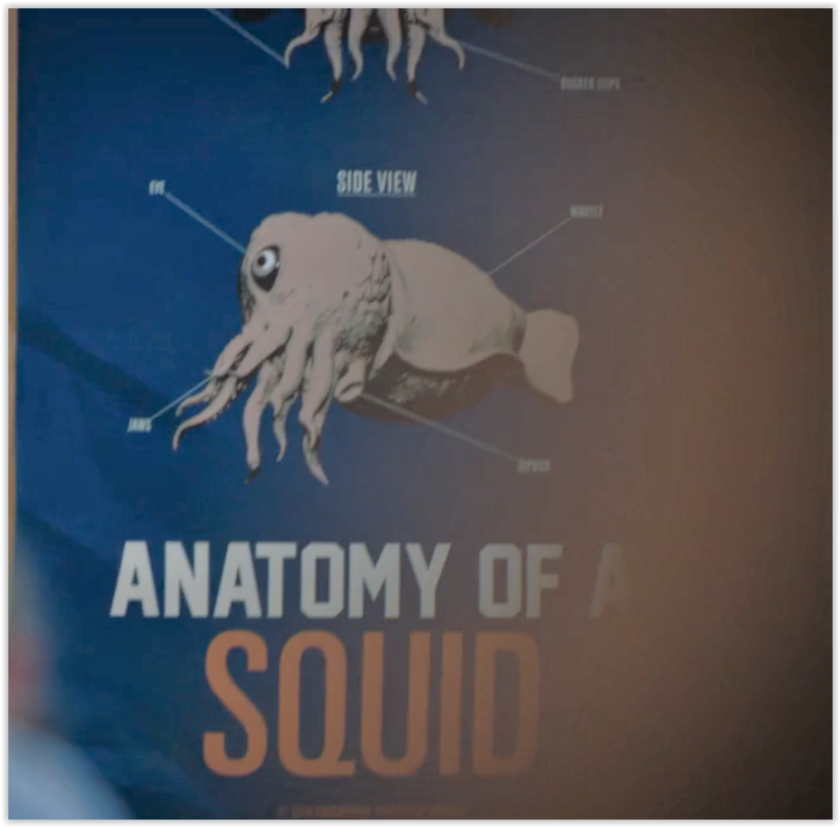
Judging by their weary reactions, this is a regular, if inexplicable, event, something later confirmed by the appearance of a municipal truck with the sole purpose of cleaning them from the streets.

I’d guess that this is a subtle statement from Damon Lindelof that this TV show is a sequel to the actual comic of Watchmen, and not its 2009 film adaptation. In the comic, Veidt’s trick on mankind to pull it back from the brink of nuclear war was the manufactured appearance of a giant alien squid killing millions in New York City; this was the only element changed by Zack Snyder for his otherwise too-faithful film, in which the catastrophe killed many millions more and was falsely blamed on Dr Manhattan. The distinction is important, as the events of the comic (followed here) do not leave Dr Manhattan perceived as a threat to all of humanity.
Callbacks and throw-forwards: Lindelof has also thrown in a few references to the comic that are obvious but not necessarily story-related. The motto of the Tulsa Police Department, loudly shouted at their meeting, appears to be, “Quis Custodiet Ipsos Custodes?”, a line from Roman satirist Juvenal that also appeared prominently in the comic. Its meaning? “Who watches the Watchmen?”
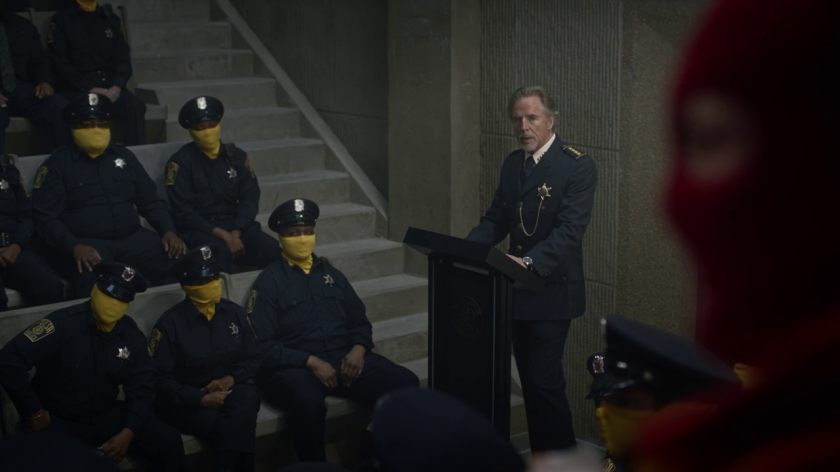
During the raid on Seventh Cavalry HQ, Angela struggles to prevent a suspect killing himself with a cyanide pill. It’s played exactly liked the (faked) attack on Adrian Veidt in the comic.
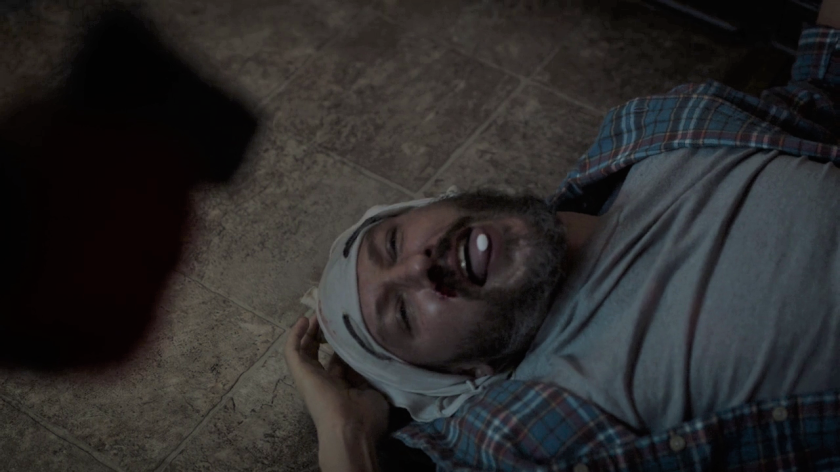
Alan Moore also had a habit of subtly telegraphing future plot points with throwaway lines of dialogue. Early in the ep, the mysterious wheelchair-bound old man (played by 80s action icon Louis Gossett Jr), asks Angela, “you think I could lift two hundred pounds?” At the end of the ep, he’s sitting by the hanging corpse of Jud Crawford, who looks like he weighs… oh, about two hundred pounds.
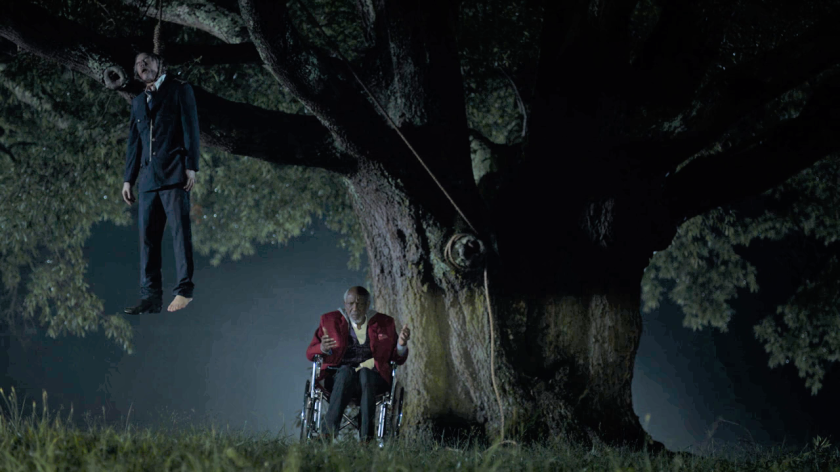
Finally, and fittingly, by Jud’s dangling feet, his sheriff’s badge lies on the ground. As the episode closes, a single drop of blood splashes onto its top corner and runs down across it…
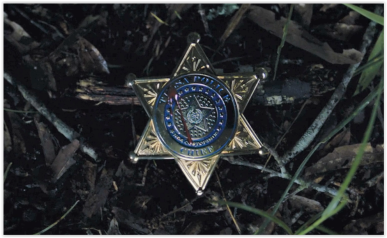

This was an interesting and thought-provoking debut. Lindelof is clearly every bit as much a fan of Watchmen as Zack Snyder, but his reverence for the material has been far more cleverly applied here than Snyder’s in the movie adaptation. It’s plainly adopted the potential of a different medium from the comic – long form TV drama – even acknowledging that by having a show-within-a show mirroring the original’s comic-within-a-comic.
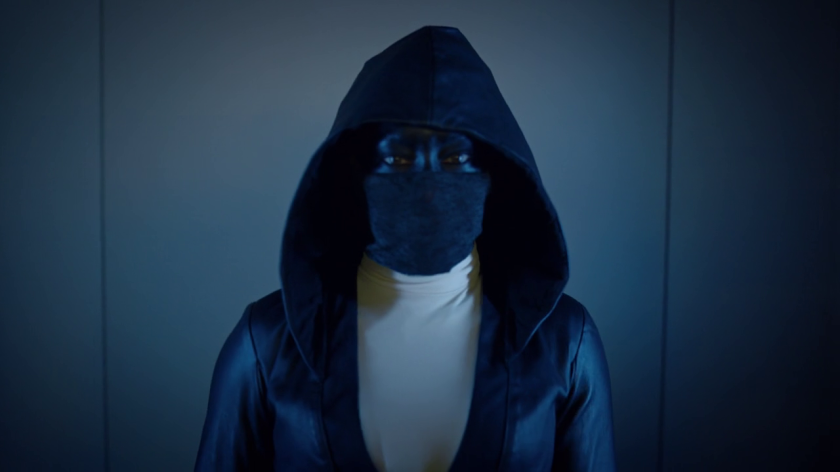
It’s hard to judge the cast yet, as only Angela and the now-departed Jud were given much depth in this opener, but both were excellent. Regina King in particular brings a real air of respectability to something that could easily have been seen as pulp, while director Nicole Kassell’s sombre camerawork and editing give it a similar air of seriousness. Even the score is superb – composed by Oscar-winning musician Trent Reznor, it will surely be available to buy quite soon.
I still have my reservations about Damon Lindelof’s ability to write an ending, but that remains to be seen here; and without the deliberate puzzle-setting of Lost is arguably less important than the journey where long form TV is concerned. I gather that HBO are viewing this not as a ‘limited series’ but an ongoing one with the potential for future seasons, so it may not become an issue for a while yet.
Alan Moore, of course, will probably hate this – if he ever even watches it. But I thought it was well-crafted, deep and thought-provoking. It captures the original’s blend of real-world social and political concerns with deconstruction of superhero stories – something just as relevant today, when every other film in theatres seems to be part of the Marvel Cinematic Universe. I’ll write more on each episode if possible, hopefully in rather shorter form 😊

